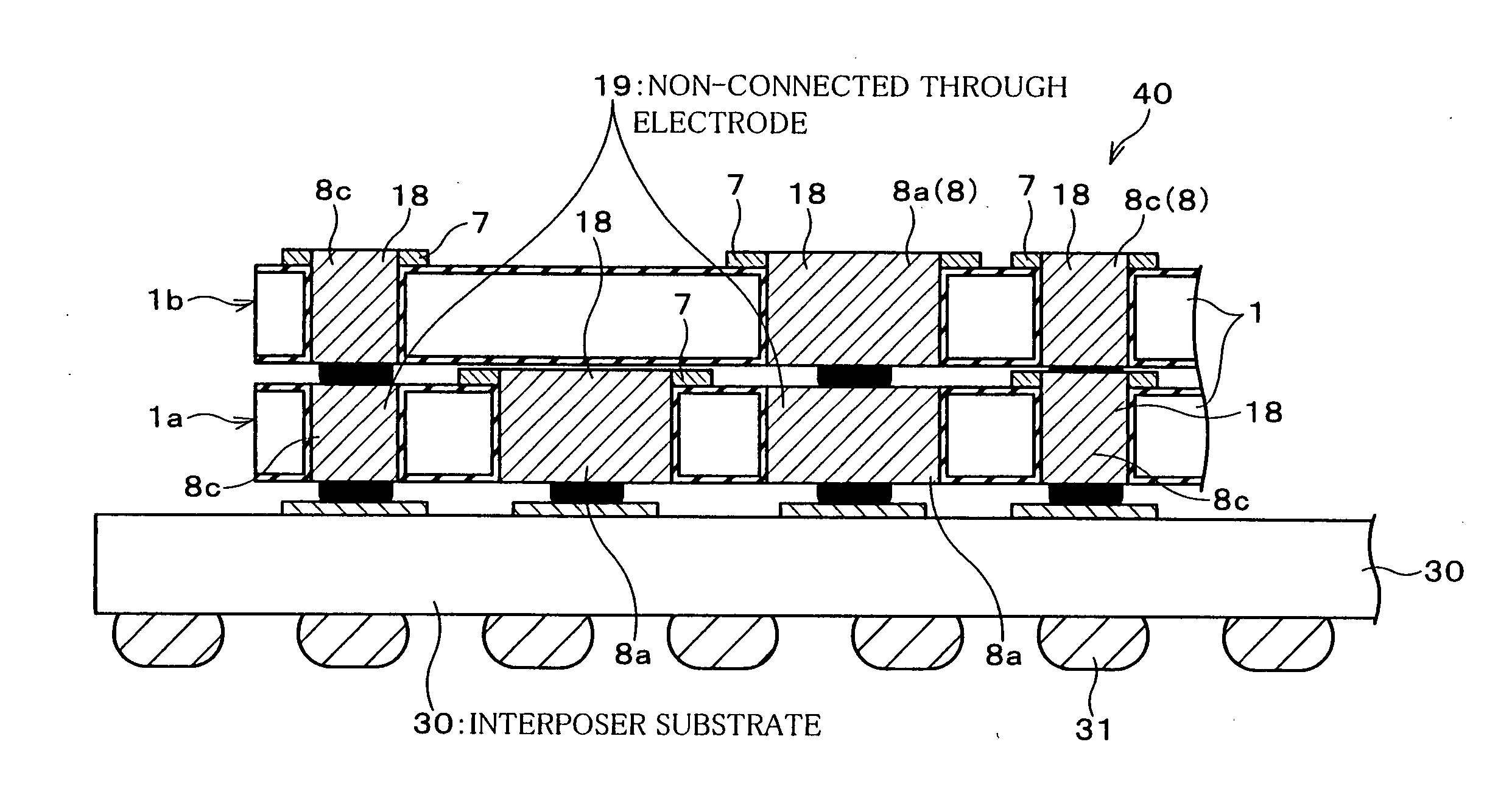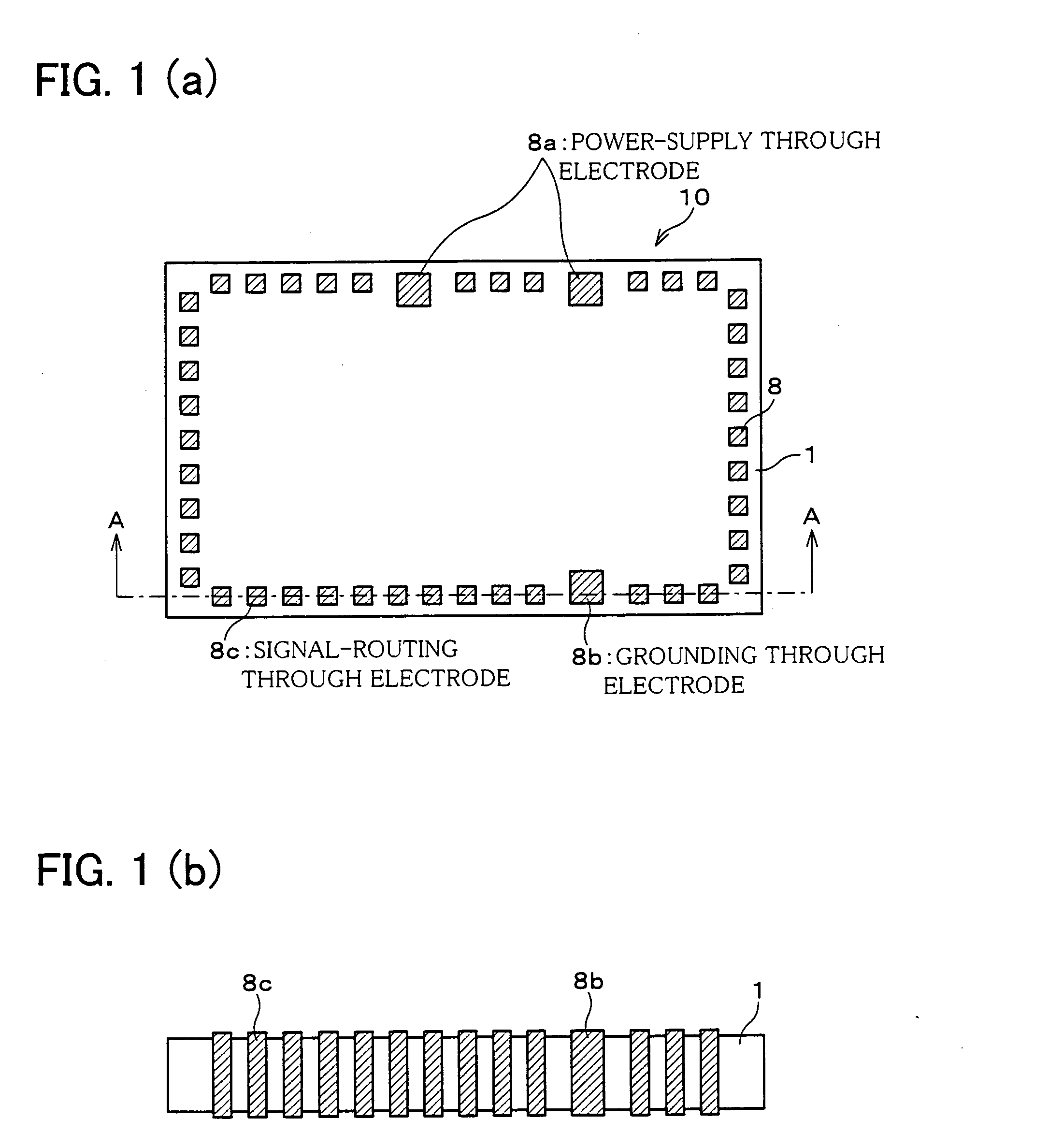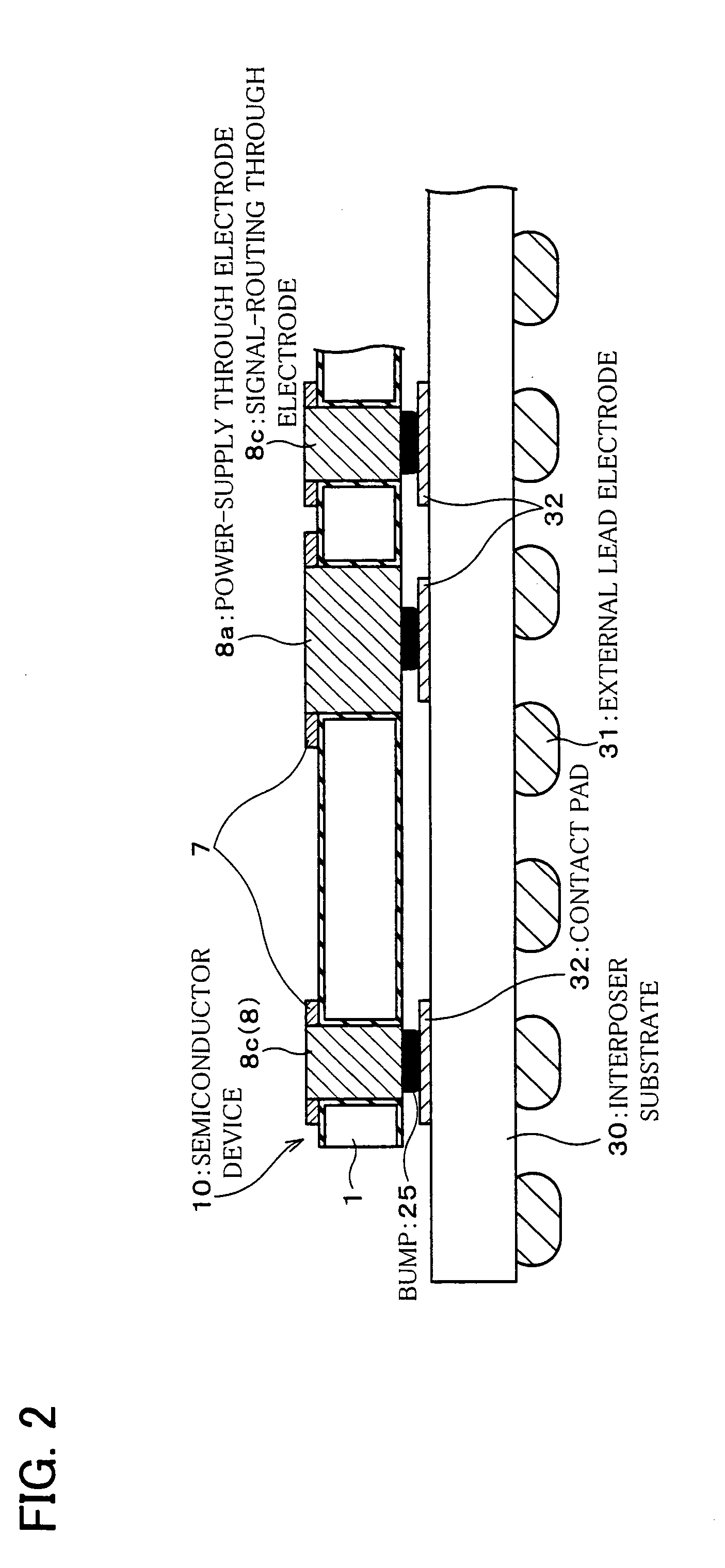Semiconductor device and chip-stack semiconductor device
a semiconductor device and semiconductor technology, applied in semiconductor devices, semiconductor/solid-state device details, electrical apparatus, etc., can solve problems such as heat, delay signals, and difficulties in reducing the thickness of csp semiconductor devices, and achieve the effects of preventing the resistance of electrodes from excessive voltage drop, delay, and loss
- Summary
- Abstract
- Description
- Claims
- Application Information
AI Technical Summary
Benefits of technology
Problems solved by technology
Method used
Image
Examples
embodiment 1
[0037] Referring to FIG. 1 through FIG. 8, the following will describe an embodiment according to the present invention.
[0038]FIG. 1(a) is a plan view illustrating a semiconductor device 10 in the present embodiment. A semiconductor chip 1 in the semiconductor device 10 has along its periphery multiple through electrodes 8 having differing cross-sectional areas. The through electrodes 8 are made through the semiconductor chip 1.
[0039] As shown in FIGS. 1(a), 1(b), the through electrodes 8 are divided into three major types: power-supply through electrodes 8a, grounding through electrodes 8b, and signal-routing through electrodes 8c. The power-supply through electrode 8a and the grounding through electrode 8b have a different cross-sectional area from that of the signal-routing through electrode 8c. More specifically, the power-supply through electrode 8a and the grounding through electrode 8b have a greater cross-sectional area than the signal-routing through electrode 8c.
[0040] ...
embodiment 2
[0086] The following will describe another embodiment of the present invention with reference to FIG. 9. For convenience, members of the present embodiment that have the same arrangement and function as members of embodiment 1, and that are mentioned in that embodiment are indicated by the same reference numerals and description thereof is omitted.
[0087] The present embodiment will describe a chip-stack semiconductor device which includes multiple in general and two in particular stacked semiconductor chips of the semiconductor device 10 of embodiment 1.
[0088] Referring to FIG. 9, the chip-stack semiconductor device 40 of the present embodiment includes an interposer substrate 30 on which are sequentially stacked two semiconductor chips 1: a semiconductor chip 1a and a semiconductor chip 1b. In an example of this kind of chip-stack semiconductor device 40, the semiconductor chip 1a is a logic memory, and the semiconductor chip 1b is a flash memory.
[0089] In the chip-stack semicon...
embodiment 3
[0106] The following will describe another embodiment of the present invention with reference to FIG. 10. For convenience, members of the present embodiment that have the same arrangement and function as members of embodiments 1, 2, and that are mentioned in that embodiment are indicated by the same reference numerals and description thereof is omitted.
[0107] The present embodiment will describe a chip-stack semiconductor device which includes multiple in general and five in particular semiconductor chips 1 of embodiment 1 stacked on top of each other.
[0108] Referring to FIG. 10, a chip-stack semiconductor device 50 of the present embodiment includes an interposer substrate 30 on which are sequentially stacked five semiconductor chips 1: a first semiconductor chip 1a, a second semiconductor chip 1b, a third semiconductor chip 1c, a fourth semiconductor chip1d, and a fifth semiconductor chip 1e.
[0109] The figure shows that interconnect lines are longer from the uppermost, fifth se...
PUM
 Login to View More
Login to View More Abstract
Description
Claims
Application Information
 Login to View More
Login to View More - R&D
- Intellectual Property
- Life Sciences
- Materials
- Tech Scout
- Unparalleled Data Quality
- Higher Quality Content
- 60% Fewer Hallucinations
Browse by: Latest US Patents, China's latest patents, Technical Efficacy Thesaurus, Application Domain, Technology Topic, Popular Technical Reports.
© 2025 PatSnap. All rights reserved.Legal|Privacy policy|Modern Slavery Act Transparency Statement|Sitemap|About US| Contact US: help@patsnap.com



